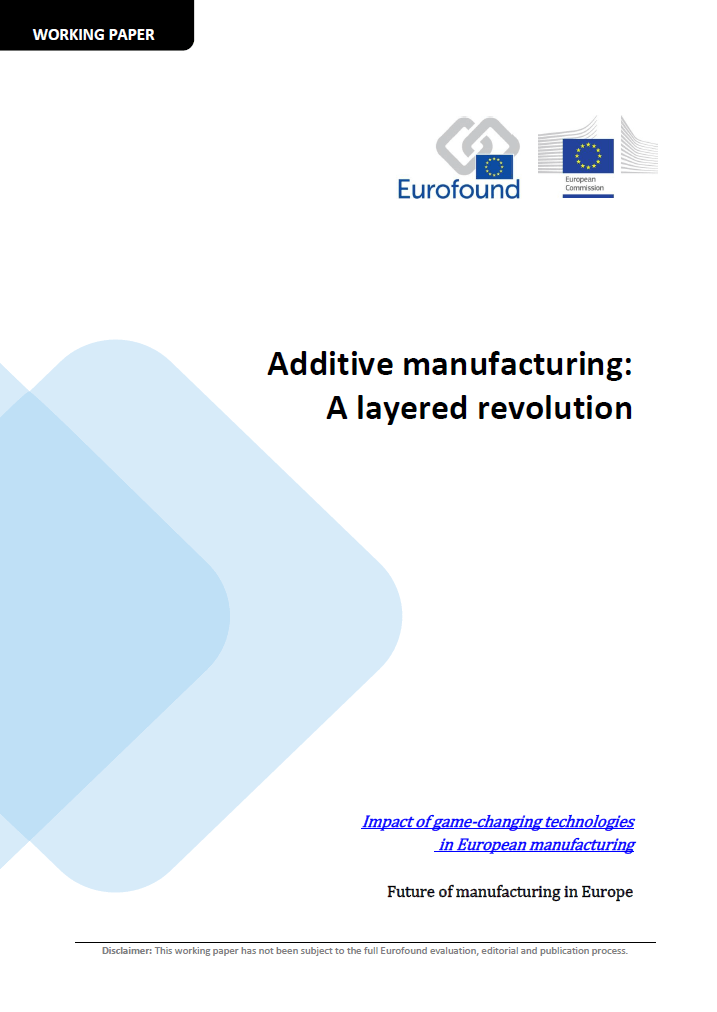
Additive manufacturing: A layered revolution
This report describes how Additive manufacturing (AM) changes the way products are made and what this means for work. The introduction of AM in manufacturing industries will impact value chains, business models and specific activities such as product design and prototyping. These changes require employees that are ready to work with the technology itself and that are open to changes in production processes.
Though AM can be positioned as a game changing or breakthrough technology, AM in itself is not new and the increasing maturity of AM technologies is a steady and slow process. Recent (rapid) adoption of the technology is driven by expiry of patents, miniaturisation of equipment and increase computing. In essence, AM is the revolution of turning data into things1, which enables:
Mass-customisation;
Previously unavailable geometry;
Complexity for free;
Material efficiency gains; and
Supply-chain simplification.
Additive manufacturing is, in one version or another, available for any type of material: metals, ceramics, plastics and biomaterials. Most probably, AM will be deployed on a ‘material per material-basis’ because the technologies for different materials vary so from one another (in terms of maturity, flexibility, costs, safety risks, etc.).
AM is applied mostly in manufacturing industries where the following parameters influence decisions about technologies and production processes:
High added value of customisation;
Small batch size;
Design complexity;
Importance of low weight; and
Drastic assembly reduction.
Therefore, AM is applied most prominently in the aerospace, automotive and medical industries. In addition, there are broader, horizontal applications of AM as a technology to produce components for equipment manufacturing, prototypes and spare parts. Especially for these applications, the technological developments and the cost effectiveness and price of AM (mostly for metal) are important drivers. Other drivers (or enablers) are the extent to which AM can deliver on parameters such as reducing weight and simplifying assembly lines. Barriers are mostly seen in technological immaturity (depending on the material used), standardisation and interoperability issues, a lack of certification and to some extent IP concerns. Nonetheless, there is little doubt that AM is here to stay in one form or another, as several manufacturing industries are investing heavily in new production technologies (e.g. 3D printers), materials and applications of AM.
Because AM implies that design can more easily be translated into production, without the need for all too detailed manufacturing process knowledge, AM shifts the focus towards design and creativity. By means of digitisation and robotisation (AM is in fact a very specific robot), AM further reduces direct human involvement in the manufacturing process. The role of process operators/supervisors will continue to be important, while there will be less need for assembly line workers.
Because AM equipment is no longer specific to a single kind of product (such as injection moulding) but only to a material, AM equipment can be used more flexibly. This flexibility can be leveraged by companies and individual seeking to use ‘idle time’ for cheap production slots or even ‘general purpose factories’. Examples in this report demonstrate that this enables new business models such as ‘bridge manufacturing’.
These changes in the production process imply that, increasingly, the tasks and occupations of managers, designers, process operators and engineers overlap. At least, it becomes more important to efficiently and dynamically collaborate. This is facilitated by individuals and teams that are multi-disciplinary. The shift from process responsibility to product responsibility illustrates these changes. Indeed, team work is becoming more important as the chances of a single employee mastering all required skills at the same time are slim.
Because AM also increases the possibilities to use IT and automate processes, the importance of IT and data literacy increases. Whether AM reduces or increases the number of jobs in Europe or the world at large is a topic of heated debate. Assembly tasks can be greatly reduced with AM’s ability to deliver more complex designs in one run. The prospect of multi-material printing only amplifies this development. On the other hand, the current state of AM requires manual post processing for most parts, which sometimes requires new processes. Moreover, AM does not substitute mass production (that still accounts for most of the companies and jobs). For instance, this report describes that the hearing aid production industry has seen re-shoring, partly because of the importance of small batch production and customisation. Re-shoring is less obvious for manufacturing of highly standardised or bulk products such as electronic equipment.
Flexible production systems enabled by AM could lead to more flexible work schedules, depending on client needs and worker availability. However, this effect can be small because economic considerations such as maximising asset usage also apply to AM. Therefore, 24/7 production shifts would still be the most logical choice.
A consumer revolution in the sense of ‘click to materialise’ is not expected due to the nature of products desired at homes (usually mass-manufactured plastics) and the relative complexity of home 3D printing. Local production hubs and maker spaces, where local specialists and inventors convene, are a more realistic conception of the democratisation of production. One could still consider this to be revolution in manufacturing.
Because AM production environments are digitalised and robotised, they are expected to be cleaner and (mechanically) safer. However, little is known about other safety aspects, such as chemical and electrical safety. Several experts raise concerns over nano-particles that may be emitted by AM, depending on the materials and equipment used.
Education institutions and policy makers respond to AM in the broader context of Industry 4.0. As such, research, innovation and experiments in AM are closely linked to the use of Advanced industrial robotics (AIR) and the Industrial internet of things (IIoT). AM and Industry 4.0 in general have triggered increased collaboration between industry and educational institutions. Here, the emphasis on technical skills further increases (materials, engineering, IT, etc.), while design, creative and communication skills are also invested in (see the concept of 21st century skills). This applies to formal education, at all levels, but also to training of employees. Because of the various established and emerging applications of AM, AIR and IIoT, in a wide range of industries, the need for flexibility is stressed. This also means flexibility in terms of combining and expanding skills (see the concept of lifelong learning). One of the options is to shorten formal education and allocate more budget (public and private) to training of employees, employers and self-employed experts.
To conclude, Additive manufacturing is a revolutionary technology that will no doubt have a large impact on the European manufacturing industry. The picture is clearer with respect to tasks, skills needs and working conditions, than regarding the number of jobs across the AM value chain. Current occupations will cease to exist and new ones will be created. AM certainly makes manufacturing more flexible and enables new business models. It also requires a more digitally literate, flexible and interdisciplinary work force, just like Advanced industrial robotics and the Industrial internet of things do. Education institutions, together with companies, are right to adapt education and training, to further strengthen a flexible workforce.

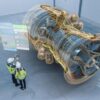
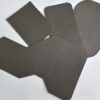
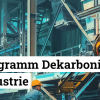
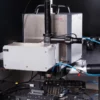
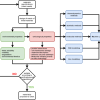
Additive manufacturing: A layered revolution 0 reviews
Login to Write Your ReviewThere are no reviews yet.